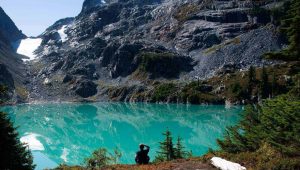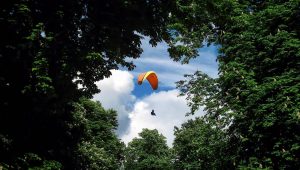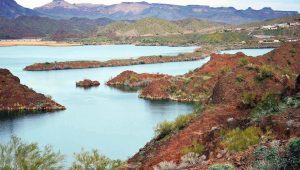Overview
About the tour:
The capital city of Nepal is Kathmandu, which is known as the City of God and Goddess. You will find a lot of historical moments in temples or stupas in every corner of the city. This chaotic city has seven of the ten heritage sites inscribed on the UNESCO list in Kathmandu. Our day trip to Kathmandu offers art, culture, architecture, and craftsmanship, and the statues on the walls, pillars, architecture, and heritage are fascinating. The ancient palaces of Kathmandu, Patan, and Bhaktapur think royal about the taste of the ancient Malla kings of Nepal. As well, temples like the Pashupatinath Temple and Changu Narayan Temple reflect the religious aspects of Nepalese Hindus.
As well, Lumbini, the birthplace of Boudhanath Stupa, Swayambhunath Stupa, and Gautama Buddha, will provide some knowledge about the Buddhist religion.
Patan Durbar Square
Patan is the oldest of all three cities in the Kathmandu valley. It is well known for its creative heritage. It is, in all probability, one of the oldest Buddhist cities in the world. The city is located on a plateau covering the Bagmati River. Another name for Patan is Lalitpur. The city is surrounded by 4 stupas, the 4 corners of Patan, one at each of its cardinal points.
These stupas were built by the popular Emperor Ashoka. It is one of the most graceful architectural valuables of which Patan is very proud. The Beauty of Patan, a western lady writer, says: “Patan means even itself, and Patan Durbar Square is the eye-catching sight of Asia indeed.” It is based on Hindu temples and Buddhist monuments with bronze gateways, guardian deities, and great carvings, and many visitors come here to visit these monuments. Patan Durbar Square is a popular tourist spot. The square is full of ancient places, temples, and shrines noted for their beautiful carvings. The royal palace complex is the center of Patan’s religious and social life and houses a museum containing an array of bronze statues and religious objects. There are three main courtyards, or chowks, in the central Mul Chowk, Sundari Chowk, and Keshav Narayan Chowk in the square. The Sundari chowk is known as the holding center of the masterpiece of stone architecture and Turshahity called the royal bath.
Kathmandu Durbar Square, Kathmandu Overview
Kathmandu Durbar Square is the place where one king after the other sat and ruled over Nepal a long time ago, where new rulers were crowned while the steady beats of drums and trumpets filled the place. The grand Kathmandu Durbar Square is one of the three largest durbar squares in the country. To date, the place remains the most remarkable heritage of Kathmandus traditional architecture. Though the regrettable earthquake of 2015 took its toll on the building and around half a dozen places within the premises collapsed, it has still retained its original glory. Three squares—a former elephant stable, Basantapur square, the main Durbar square on the west, and another part of Durbar Square that houses the entrance to Hanuman Dhoka, which are loosely
connected, make up the Durbar Square area.
While the southern part of the compound houses the open Basantapur Square area, the main focus of theDurbar Square area occupies the western portion. For many years, the former used to be a stable that housed royal elephants. Today, it is a site that houses
souvenir stalls. In the northeast corner of the complex runs the second part of the square. In this area, the entrance to the glorious Hanuman Dhoka Complex is situated, with a beautiful assortment of temples nestled behind it. The place is an active walkway that connects many streets for the public. Though the durbar is no longer used for coronations, it is streamed by people during festivals like Dashain, Indra Jatra, Machhindranath Jatra, and Gaijatra. The complete Durbar Square complex was announced by UNESCO in 1979 as a World Heritage Site.
Bhaktapur Durbar Square
Bhaktapur Durbar Square, as the city is known, is a museum of medieval art and architecture with many examples of sculpture, woodcarving, and colossal pagoda temples consecrated to different gods and goddesses, and is 15 km away from Kathmandu. It is a collection of pagodas and shikhara-style temples grouped around a fifty-five-window palace of brick and wood. The square is one of the most pleasant architectural showpieces in the valley, as it highlights the ancient arts of Nepal. The golden craze of kings perched on the top of stone monoliths; the guardian deities looking out after their sanctuaries; the wood carvings in every place-struts, lintels, uprights, tympanums, etc. seem to form a well-orchestrated symphony.
-Pottery and weaving are their major traditional industries.
-The major attraction of Bhaktapur is Darbar Square.
-The Palace with 55 Windows
This is the main architectural formation dominating the entire Durbar Square. This spectacular monument was built in the fifteenth century AD. The position has a huge number of columns at the top of the prayer to God the King and Bhupatindra Malla.
Golden Gate
This is the main entrance to the palace of Bhaktapur. The artist who created the spectacular gate must be from heaven, a thing of eternal beauty in and of itself
Best time for the tour:
The perfect time for a tour is to be in winter due to the climate or any other reason related to the tour and fresh about it.
At tour Nepal Trips, we are committed to making your tour the best experience you will ever have. If you are interested in joining Kathmandu Valley Day Tour, contact us and we will take care of everything for you. Please note that these trips are completely
customizable according to your preference. The itinerary is only for reference.





